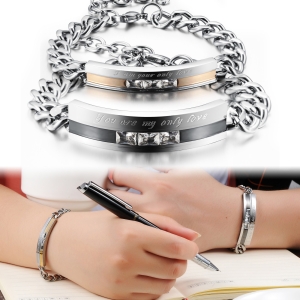Affordably innovative services that help build better skills, better processes, and better-performing machines from the best brands, such as wire-cut EDM machines, milling and turning machines, etc. This article will discuss the functionality of the wire-cut EDM process as well as the types of materials that can be sliced using this technique.
What exactly is wire EDM, and how exactly does it function?
The term "wire electric discharge machining" (also known as "EDM") refers to a process that is used for cutting metals. The piece of metal that needs to be cut is first dismantled by running a wire across it. But how exactly does running a wire through metal cause it to be cut? In this instance, an electrically charged brass wire is utilized, and its movement is carried out in a manner that is completely automated and under control. The wire moves in close proximity to the workpiece but does not actually touch it. The chasm that separates the two is barely wider than a single human hair. This method is very much like the laser cutting process, and it does not require the use of any kind of mechanical force. Either the metal or workpiece is completely submerged in a dielectric fluid or the fluid itself is flushed over the metal and wire. Alternatively, the dielectric fluid may be used. The fluid assists in the removal of the fragments of the metal that have disintegrated. Sparks are produced during this process, which are then used to cut the metal; despite the fact that the fragments of disintegrated metal are relatively small, the sparks are discharged approximately 100,000 times in a single second. Wire electrical discharge machining (EDM) is a method that can cut metals and shape them into intricate designs, unlike any other method. The unrivaled level of precision that this completely automated system possesses enables it to produce results that are reliable every time. There are a few different names for wire cut EDM, including wire burning, wire erosion, and spark EDM. When working with metals that must be cut from the interior rather than the exterior, electrical discharge machining (EDM) is used to create a hole in the metal's interior, through which a wire is then fed to form the desired shape.
The EDM wire method is capable of cutting through any conductive material, including but not limited to steel, titanium, aluminum, brass, alloys, and superalloys. Because of its high level of accuracy, the EDM wire cut technique has quickly become the standard cutting method across all sectors. Using EDM wire, intricate machine parts, logos, and other types of metal can be easily cut and fabricated. The thickness and size of the part that needs to be cut, as well as the length of cut that needs to be created, all play a role in determining whether or not Wire EDM Machining should be used to produce the part or its prototype. Contact us right away if you require assistance in the process of purchasing a wire-cut wire edm services machine, as we are here to help. Our devoted team of industry professionals is here to assist you in locating the most suitable machines for your needs and objectives.
EDM Aluminum is one of the metals that is used the most frequently all over the world due to the fact that it has an excellent strength-to-weight ratio, is inexpensive, and can be recycled.
By processing the pulse gap and reducing the pulse width, you can work toward achieving a higher pulse power supply no-load voltage amplitude. The possibility of debris becoming attached to the EDM electrode wire is reduced as a result of this action.
During the cutting process, you need to make sure that the fluid flow is the same for both the top and bottom portions of the EDM wire.
Make sure the filtering for the dielectric fluid is adequate so that debris can be quickly removed.
Try cutting with a brass wire instead of one of the metal wires you are working with if you are having trouble.
EDM Brass 360 Brass, which is also referred to as free machining brass, is a material that is frequently utilized for the production of a wide variety of parts, including gears, pipe fittings, lock components, and ornamental applications.
The electrical discharge machining (EDM) wire and tubing can both benefit from the use of brass. Brass is another common material for the electrodes of EDM machines.
Due to their high thermal and electrical conductivity, copper alloys 101 and 110 are natural choices for bus bars, wire connectors, and a variety of other electrical applications. The use of edm cutting services on copper also produces a re-cast layer, but in contrast to the layer produced by EDM on steel, the layer produced by wire EDM on copper does not show the same microscopic issues (such as cracking or porosity). Copper's higher thermal conductivity results in a more even distribution of the heat generated by the EDM process, which is why this is the case. Because of its high thermal conductivity, copper results in a high rate of energy dissipation at the surface of the workpiece, which slows down the process of material removal.
Shorten the amount of time the EDM spark is on for to lower the probability of sublimation happening.
Amperage needs to be increased in order to keep the same level of spark intensity when working with less conductive materials.
To get a good rate of material removal while minimizing the amount of wear on the electrode, apply negative polarity to the electrode and set the amperage setting as high as possible (this may require a larger electrode).
Make sure that the workpiece is adequately flushed, which means that the pressure and flow rate should be maintained at a level that does not cause turbulence but still effectively removes debris.
menu
menu
Menu



